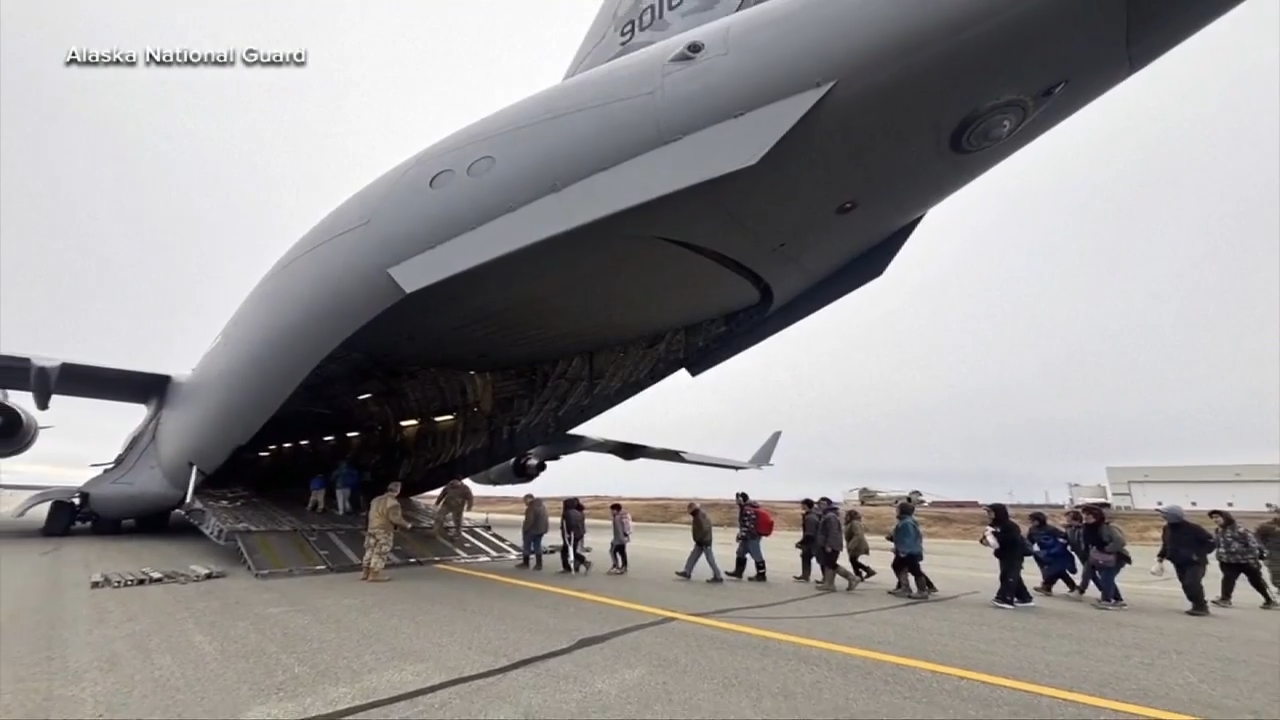**Severe Flooding in Remote Alaska Villages Displaces Over 2,000 Residents, Return Home Unlikely for 18 Months**
ANCHORAGE, Alaska (AP) — Damage to remote Alaska villages hammered by flooding last weekend is so extreme that many of the more than 2,000 people displaced won’t be able to return to their homes for at least 18 months, Governor Mike Dunleavy said in a request to the White House for a major disaster declaration.
In one of the hardest-hit villages, Kipnuk, an initial assessment showed that 121 homes — or 90% of the total — have been destroyed, Dunleavy wrote. Meanwhile, in Kwigillingok, where three dozen homes floated away, slightly more than one-third of the residences are now uninhabitable.
The remnants of Typhoon Halong struck the area with the ferocity of a Category 2 hurricane, sending a surge of high surf into the low-lying region, Dunleavy said. The flooding resulted in one fatality, two people remain missing, and rescue crews plucked dozens from their homes as they floated away.
Officials have been working tirelessly to airlift residents from the inundated Alaska Native villages. More than 2,000 people across the region have sought shelter in schools within their villages, in larger communities across southwest Alaska, or have been evacuated by military planes to Anchorage.
Governor Dunleavy anticipates that eventually more than 1,500 people will be relocated to major cities in the state. In Alaska’s largest city, about 575 evacuees have been airlifted by the Alaska National Guard to a sports arena and a convention center, with additional flights scheduled for Friday and Saturday.
Efforts are underway to move people from emergency shelters into short-term and, later, longer-term housing. “Due to the time, space, distance, geography, and weather in the affected areas, it is likely that many survivors will be unable to return to their communities this winter,” Dunleavy said. “Agencies are prioritizing rapid repairs in the U.S. Arctic.”
The federal government is already assisting with search and rescue operations, damage assessments, environmental response, and evacuation support. A major disaster declaration by President Donald Trump could unlock federal assistance programs for both individuals and public infrastructure, including funding for emergency response and permanent recovery work.
On Friday, Alaska’s congressional delegation sent a letter to the White House urging swift approval of the disaster declaration.
The storm surge devastated a sparsely populated region off the state’s main road system, where communities are accessible only by air or water at this time of year. These villages typically have just a few hundred residents, many of whom rely on hunting and fishing for much of their food. Relocating to Alaska’s major cities will mean adjusting to a vastly different lifestyle.
One evacuee, Alexie Stone of Kipnuk, arrived in Anchorage aboard a military jet with his brothers, children, and mother after their home was struck by flooding. They are currently staying at the Alaska Airlines Center at the University of Alaska, where the Red Cross has provided cots, blankets, and hygiene supplies.
“For now, it’s going to be trying to find a place and find a job,” Stone said Friday. Having previously worked in a grocery store in Bethel, he hopes to find similar work in Anchorage. “We’re starting a new life here in Anchorage.”




